[HTML1]
Let’s start with this: is Ruger’s new 1911 a copy of Smith & Wesson’s budget-minded 1911? More likely, Ruger’s copying the original Colt m1911 patented by John Moses Browning designed on February 14, 1911. While reviewing modern firearm patents you will find many, or most, reference previous designs in their work. They may have used the safety mechanism or possibly the firing mechanism from a previous design and adapted it to their current design. The truth about guns is that most of them are copies. One could even argue they are all copies. Now about the Smith & Wesson Governor . . .
To find the missing link to the modern shotshell revolver we have to go back a couple years, to 1856. Over 150 years ago Jean LeMat received a patent on the LeMat Revolver, also known as the Grape Shot Revolver. Using the underlug as a smooth bore barrel it was capable of firing a single round of shot in addition to the chamber rounds. This may not be an exact copy of the modern shotshell revolvers, but it did lay the groundwork.
As we progress into the 1930’s there are two firearms of interest; the Noah Schoonover design and the ultra impressive Charles Manville design.
The Schoonover design took the LeMat Revolver a step further by offering shot and slugs in the actual cylinder chambers as opposed to the single shot underlug design. The major difference between Schoonover’s design and modern options would be the use of multiple bores within a single barrel to achieve the variable shot options.
From there, came the Charles Manville design, a 12 gauge chambered revolver. At first glance this is the revolver of all revolvers. To offer a 12 gauge revolver seems, well one, hard to handle, and two, hard to turn down. Unfortunately it’s not an exact match to current models, as the design was specific to tear gas and other liquid projectiles.
All of the prior examples culminated in what can most clearly be considered the origination of the modern shotshell revolvers. On October 29, 1968 George H. Freed was granted a patent on a 3 inch .410 shotshell revolver! I could explain it, but the patent drawings say it all:
So again we can ask, did Smith & Wesson copy the Taurus Judge? Maybe, but did Taurus copy George H. Freed and did George H. Freed copy….. and so it goes. There is no doubt Taurus deserves the credit for bringing the most successful shotshell revolver to market and the sales prove that. However, it was not without help from previous designs.
[Jay Halverson runs www.armspost.com (twitter: armspost, facebook.com/armspost)]

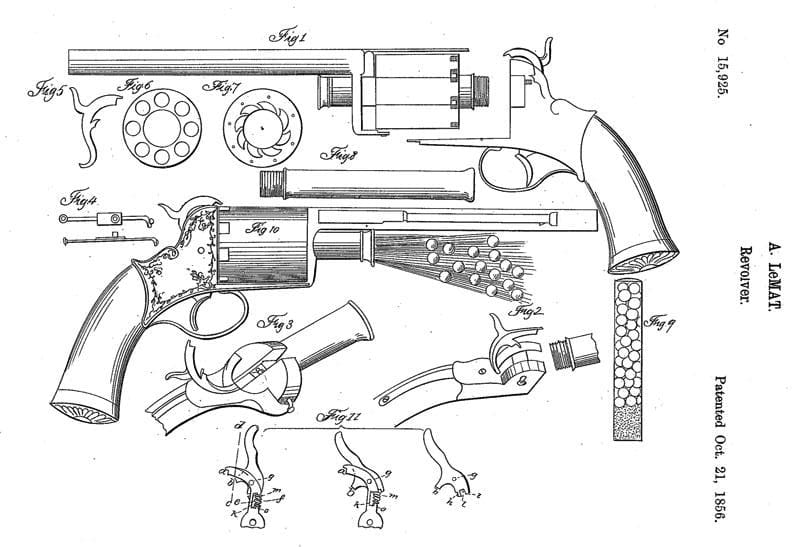
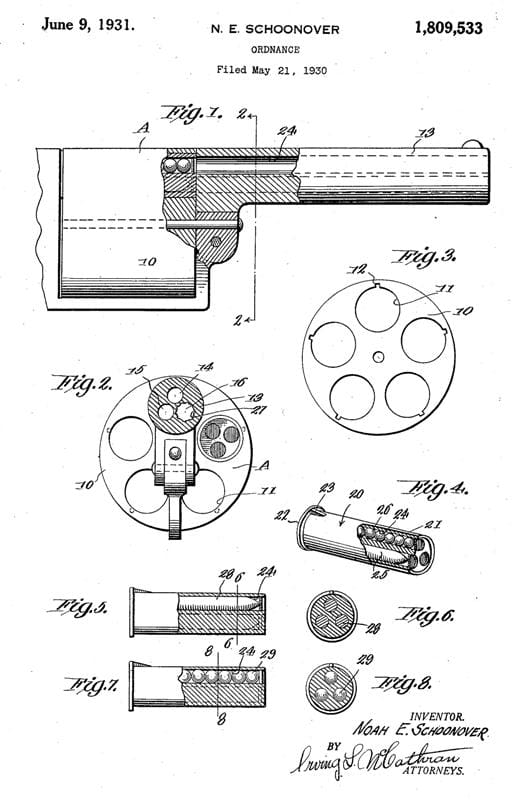
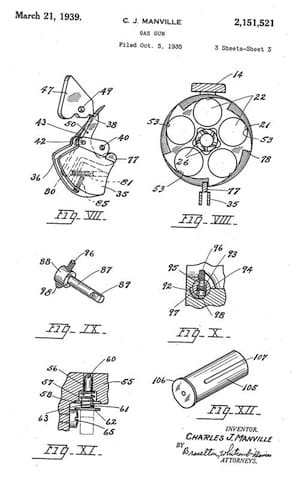
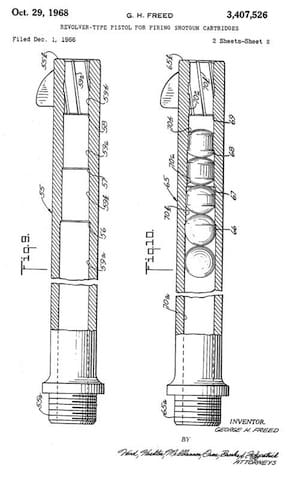
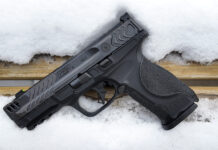


I think the problem is the name. They could have called it anything, including something alphanumeric.
honestly… calling it the Governor really does cheapen it… they should have just called the Stenographer in an attempt to be satirical and been done with it.
haha ya really, bail bonds man perhaps?
I completely agree. It seems as if they either sat around the boardroom table laughing about ticking off Taurus with that name; or thinking about the money they could save on marketing.
Why not call it The Ornithologist? It seems perfectly designed for use by biologists in harvesting small birds for study. While listening to Charlie Parker.
The last new S&W that I purchaed was a 952-1. Loved that gun but sold to finance another purchase, stupid move. Sadly, they do not make anything at the moment that makes me want to part with my $$$…especially this joke and the lock infected revolvers.
I would have named it the “EXECUTIONER”, because it sounds cool and that’s what it’s made to do. Taurus has been cloning S&W’s guns forever, and S&W knows how to make it’s own quality firearms without any help from copycat Taurus.
I still like “Judge, Jury and Executioner.”
How about “Looks like a Judge, shoots like a Judge but not a Judge”, “Hangman” or even “Supreme Court Justice”…
My friends uncle found a walking stick, hand engraved and owned by George H Freed, at a truck stop 15 years ago. I want to return it to the mans family any ideas?
Comments are closed.